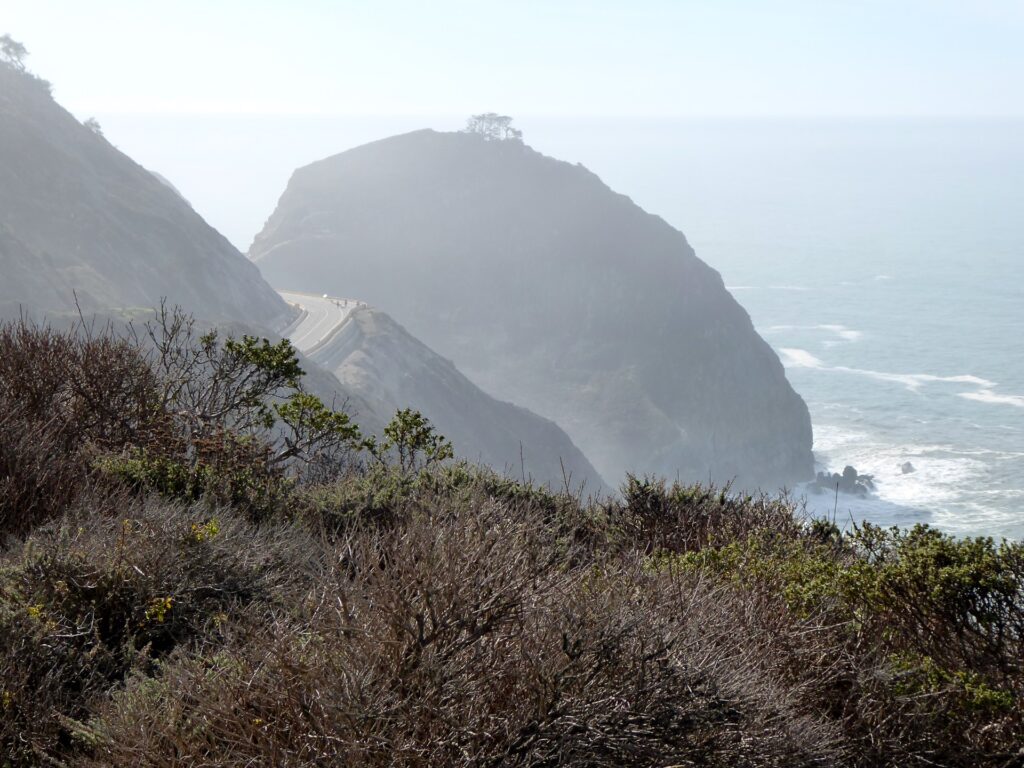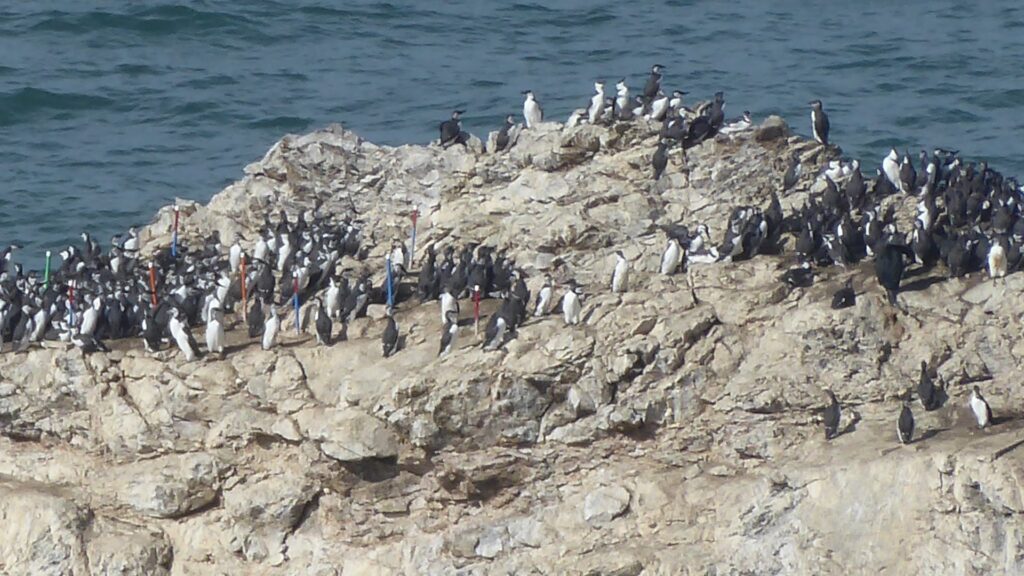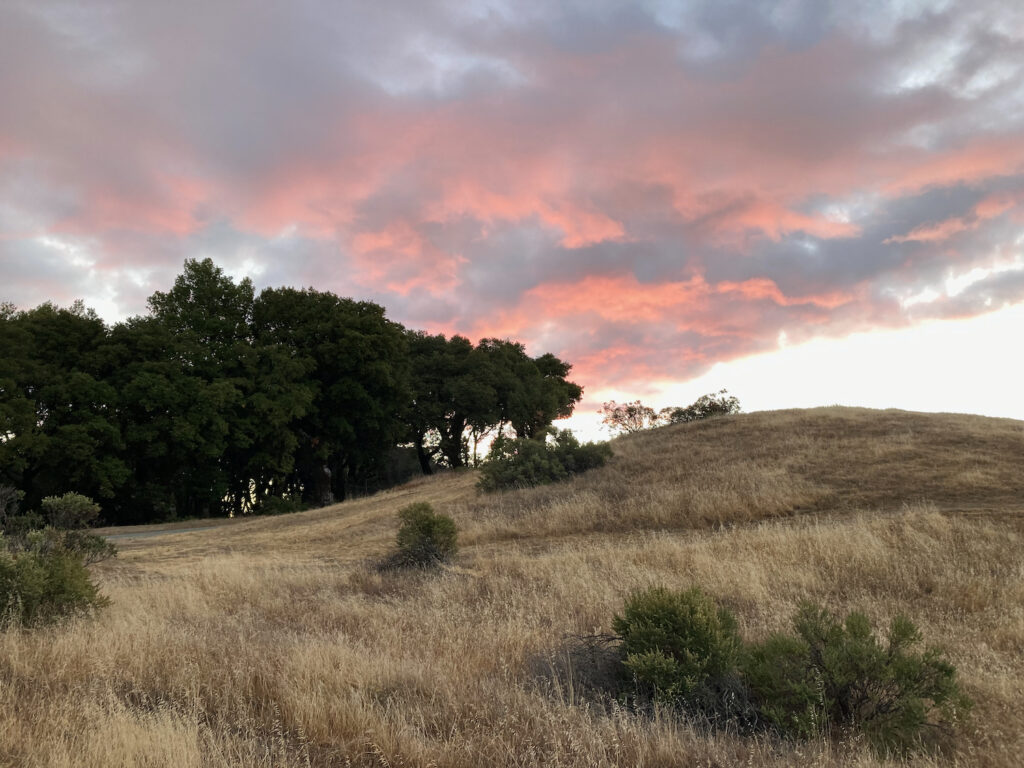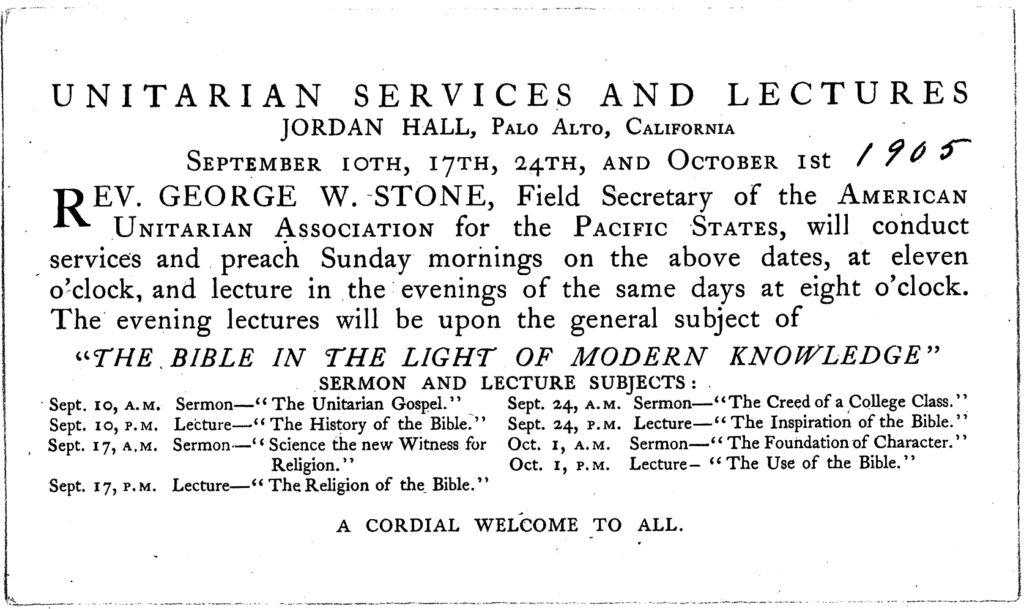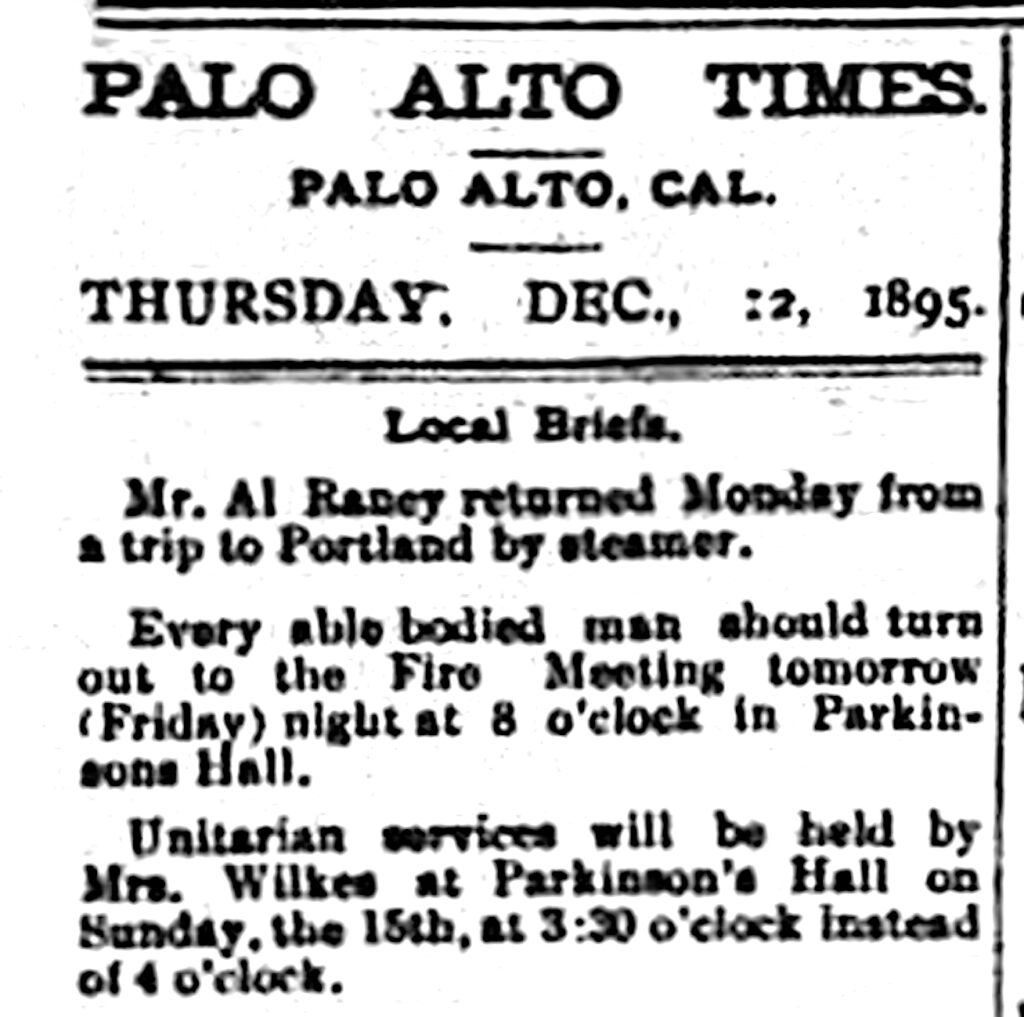For the 75th anniversary of the Unitarian Universalist Church of Palo Alto
1949 — Our congregation protests “the assumption that war is inevitable and an A-bomb justified…. We urge positive program negotiations to avoid war.”
1950 — Congregation gives sizable contributions to help Spanish refugees who had been living in France since 1938
1950 — Congregation sponsors and settles a Displaced Persons family from Latvia
1952 — Congregation refuses to sign California’s “Loyalty Oath,” and has to pay state tax even though it’s a nonprofit
1952 — Congregation collects 155 pounds of clothing for Spanish refugee children
1953 — Our congregation, the San Jose Unitarian church, and the Los Gatos Unitarian Fellowship form a dental loan fund to aid children of migrant workers
1956 — Congregation assists a displaced persons family from East Germany
1958-66 — With a group of 5 Bay Area Unitarian churches, our congregation helps found Stevenson House, Palo Alto’s first nonprofit housing for low-income seniors
1958 — Over 200 members sign a pledge of open housing, agreeing to welcome all persons to their neighborhood regardless of race, creed, or national origin
1959 — Congregation supports a Displaced Persons family from East Germany
1960 — Congregation assists a displaced persons family, plus four children from Indonesia
1960 — Congregation approves a resolution calling for the dissolution of the House Un-American Activities Commission
1962 — The Women’s Alliance sends six cartons of clothing to Spanish refugees in Toulouse, France
1962 — The Sunday school packs food baskets for prisoner’s families at Christmas
1964 — Rev. Dan Lion participates in the Mississippi Summer Project (a.k.a. Freedom Summer), and is supported by our congregation
1964 — Congregation votes overwhelmingly to oppose the Becker Amendment, Resolution 693, that would allow prayer in public schools
1964 — Congregation votes to oppose California Proposition 14, which would allow open racial discrimination when selling or renting housing
1965 — Congregation supports Rev. Dan Lion’s trip to Selma, Ala.
1965 — Sunday school students give $90 [$800 in 2020 dollars] to sponsor a foster child in Greece
1966 — Activism against the Vietnam War
1966 — Congregation sells 2.2 acres to Stevenson House elderly housing community at $30,000 below market rates [$240,000 in 202 dollars], then gives Stevenson House a $5,000 donation [$405,000 in 2020 dollars]
1967 — The congregation’s newsletter carries a series of letters over several months from congregation members both opposing and supporting the Vietnam War
1967 — Senior minister Rev. Dan Lion and Assistant Minister Rev. Mike Young provide counseling to conscientious objectors
1968 — Congregation votes to not build a new church building, and instead votes to spend the money raised on “human rights” programs
1969 — Rev. Dan Lion and other Unitarians participate in anti-war march in downtown Palo Alto
1970 — Congregation forms a nonprofit corporation to start an alternative high school, called “Lothlorien High School”
1971 — Congregation establishes Ellen Thacher Children’s Center, a day care center named after the recently deceased Ellen Thacher; 1/4 of the children receive scholarships
1972 — Congregation grants the use of the church as sanctuary for those “acting according to the dictates of their conscience in opposition to civil or military actions” [i.e., for conscientious objectors]
1975 — The Social Concerns Committee supports the United Farm Workers boycott of Gallo
1975 — After its sixth year, Lothlorien High School ceases operations
1977 — Gail Hamaker and other women from our congregation are active in getting the Unitarian Universalist Association General Assembly to adopt the groundbreaking Women and Religion resolution
1981 — The World Concerns Committee presented non-partisan lectures on various topics of social concern
1982 — Congregation votes in December to join South Bay Sanctuary Covenant to provide protection and advocacy for Central American refugees
1984 — The Sanctuary Committee raises $100 a month to support South Bay Sanctuary Covenant [$250 in 2020 dollars]
1984 — The Stevenson House Committee helps raise funds to renovate Stevenson House, arranges activities to “enliven the environment” of residents
1987 — Congregation votes to join the Mid-Peninsula Peace Center
1987 — Congregation votes to make our congregation a Nuclear Weapons Free Zone
1987 — Congregation votes to join the Urban Ministry of Palo Alto, to address homelessness
1988 — Congregation is a founding member of Hotel de Zink, a short-term homeless shelter
1989 — 1st annual Undie Sunday collection of donations of new underwear for unhoused people
1992 — Congregation gives over 3% of its annual budget to the Unitarian Universalist Service Committee
1994 — Congregations begins Welcoming Congregation process, to become more welcoming to LGBTQIA+ people
1997 — Congregation joins with other churches to form Peninsula Interfaith Action; began work on education and housing
1999 — UUA recognizes UUCPA as a Welcoming Congregation,welcoming to LGBTQIA+ people
2002 — Congregation adopts Statement of Conscience opposing the Iraq war
2002 — Marriage equality activism against the Knight Initiative (Prop 22)
2003 — Congregation raises more than $50,000 for construction of the Opportunity Center to provide services to unhoused people
2003 — Founding member of Multifaith Voices for Peace & Justice
2005 — Antiwar activism against second Iraq war
2007 — Green Sanctuary Committee is formed
2008 — Task force on ridding the world of nuclear weapons is formed
2008 — Welcoming Congregation Committee organizes congregation to attempt to defeat Prop 8, a ballot measure to ban same-sex marriage
2009 — Congregation receives Green Sanctuary Congregation certification from the Unitarian Universalist Association for good congregational environmental practices
2010 — 1st annual sale of fair trade chocolate for Halloween
2010 — Fair Elections task force is formed
2011 — Congregation works on the California DISCLOSE Act with California Clean Money Campaign
2011 — Solar panels installed on the roof of the Main Hall, providing about half of UUCPA’s energy needs
2012 — Congregation endorses SB 52, the California Clean Money Act, to require financial disclosure of campaign contributions; holds CA DISCLOSE Act rally at the church
2012 — Our Whole Lives comprehensive sexuality education classes are open to the wider community
2013 — Immigration Task Force is formed; adult class is offered on “Immigration as A Moral Issue”
2013 — Music Director Bruce Olstad launches Bodhi Tree North concert series to raise money for charitable causes
2014 — Installation of native plant garden in front of the church is completed
2015 — “Drone quilts” are displayed in the Main Hall, sponsored by Multifaith Voices for Peace & Justice
2015 — Ecojustice Camp day camp is launched to teach kids about environmental justice
2015 — Congregation gives authority to the Green Sanctuary Committee to advocate on behalf of UUCPA for environmental issues
2016 — Rev. Amy Zucker Morgenstern leads first Beloved Conversations anti-racism class
2017 — Congregation endorses SB 31, California Religious Freedom Act
2017 — Congregation co-sponsors Unity Rally to counter rally by Anti-Sharia proponents
2017 — More solar panels added to Main Hall roof, which now satisfy all the congregation’s electrical needs
2018 — Congregation approves fast-track process for endorsements on behalf of the congregation, and for approvals to carry a UUCPA banner in public rallies and vigils
2018 — Parking lot solar panels, erected by a solar energy company leasing from the congregation, begin operation
2018 — Congregation becomes a host of the year-old Heart & Home Collaborative women’s homeless shelter
2018 —Native plant garden in front of the church is expanded
2019 — Signed a Statement of Support for people arrested and charged for leaving food and water in the desert for immigrants
2019 — Congregation organizes phone banks for Reclaim our Vote, reaching out to voters of color
2019 — Rev. Amy Zucker Morgenstern begins “White Folks Dismantling White Supremacy” anti-racism class
2019 — In cooperation with Grassroots Ecology, congregation becomes a rain barrel demonstration site, with over 500 gallon capacity
2020 — Congregation participates in the Unitarian Universalist Association’s UU the Vote campaign
2020 — Members of the congregation write thousands of postcards and made hundreds of phone calls to encourage people of color in southern states to register and vote in the 2020 election
2020 — Due to COVID lockdown, Heart & Home Collaborative homeless shelter remains at UUCPA for 3 months, 24/7
2020 — Board approves carbon-neutral policy
2020 — “White Folks Dismantling White Supremacy” class expanded to twice monthly
2021 — Congregation endorses the California Ballot DISCLOSE Act
2021 — Congregation receives final approval and launches UUCPA Safe Parking Program, hosting four passenger vehicles in our parking lot, in conjunction with Move Mountain View
2021 — Board approves plastics reduction policy
2021 — First all-electric heat pump HVAC system is installed in church office
2021 — Congregation begins work on proposed 8th Principle on addressing racism and other oppressions
2021 — Core group takes online Beloved Conversations class from Meadville Lombard Theological School
2021 — Congregation renews their commitment to being a Welcoming Congregation
2021 — Congregation adds Showing Up for Racial Justice at Sacred Heart as a monthly Justice Partner
Update, 11/18/21: Errors corrected, new items added

